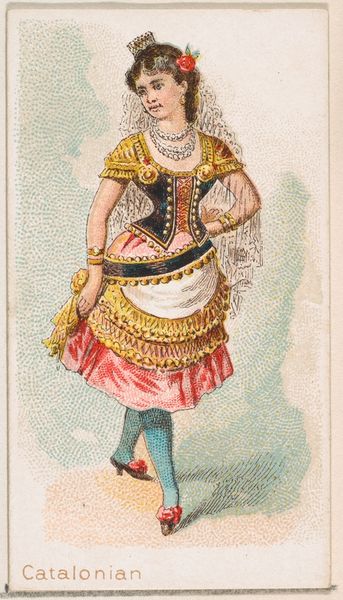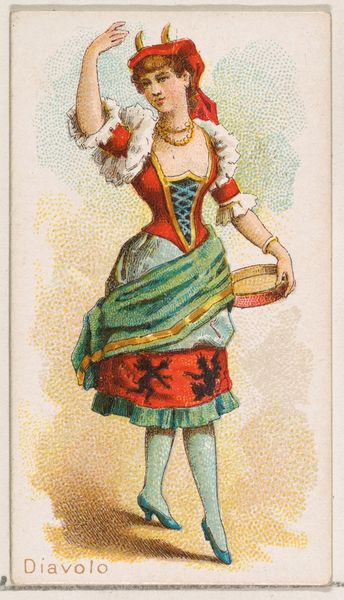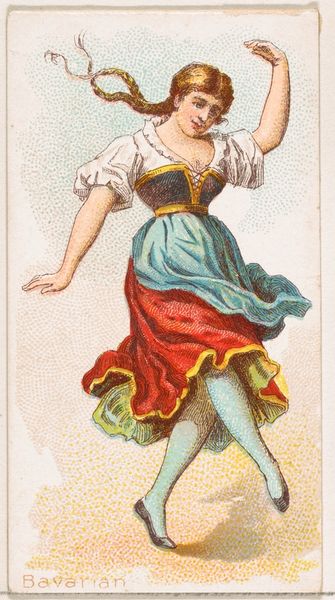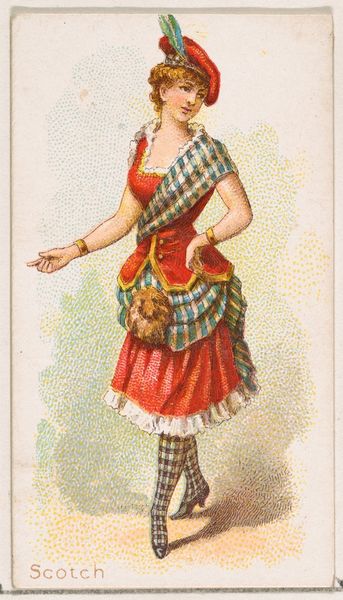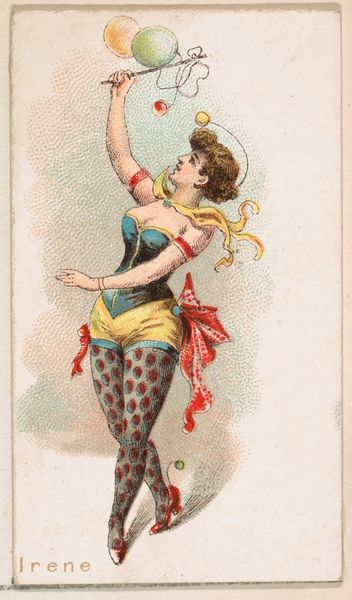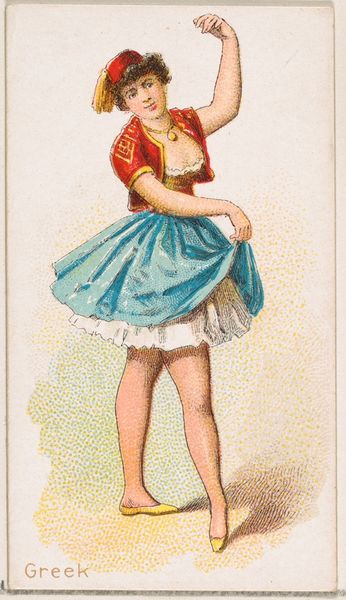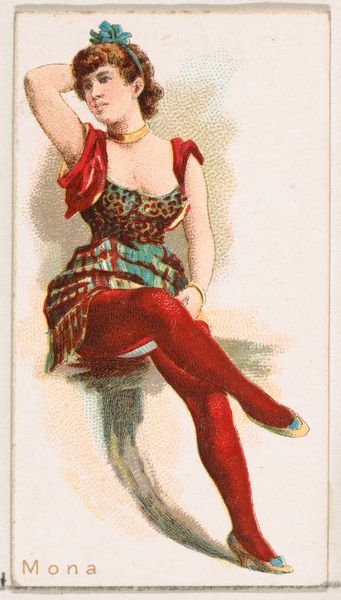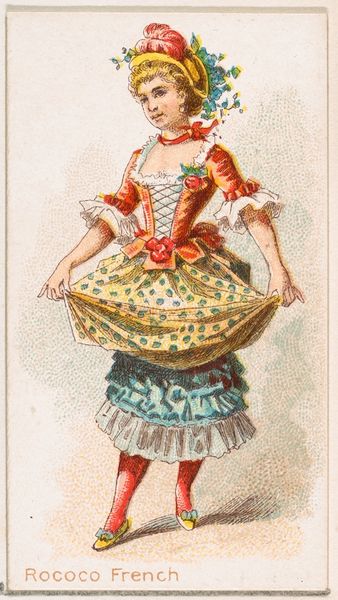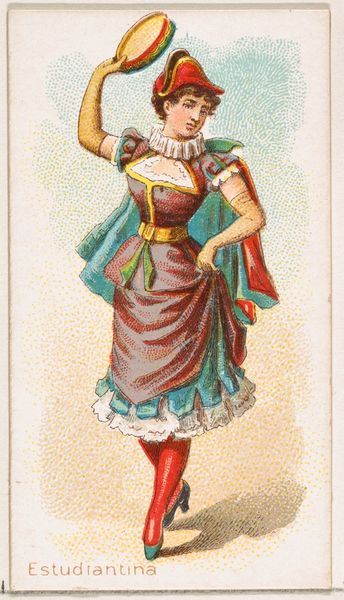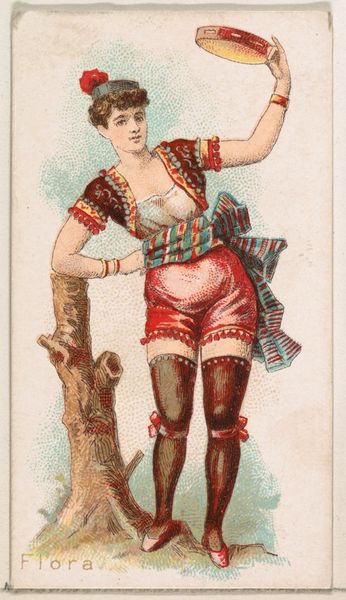
Gypsy Dancer, from the Dancing Women series (N186) issued by Wm. S. Kimball & Co. 1889
0:00
0:00
drawing, coloured-pencil, print
#
portrait
#
drawing
#
coloured-pencil
# print
#
caricature
#
caricature
#
coloured pencil
#
watercolour illustration
#
genre-painting
Dimensions: Sheet: 2 11/16 × 1 7/16 in. (6.9 × 3.7 cm)
Copyright: Public Domain
Editor: Here we have “Gypsy Dancer,” a print made by Wm. S. Kimball & Co. around 1889, part of their Dancing Women series. It's quite a small, vibrant image – almost like a trading card. The dancer seems caught in a moment of energetic performance. What do you make of it? Curator: This lithograph, mass-produced as part of a tobacco card series, is less about high art and more about the social life of images and their consumption. Consider the context: these were distributed with cigarettes, connecting female representations to male leisure and consumption. The "Gypsy Dancer" then becomes a commodity. What do the materials – cheap color lithography – and its wide circulation say about the perception and value of both art and this "exotic" subject? Editor: So it’s not really about the art itself, but how it was made and distributed. The idea of exoticism also comes into play? Curator: Exactly. The depiction of the dancer as "Gypsy" exoticizes her, feeding into prevailing stereotypes while simultaneously fueling consumer desires. And how do the repetitive methods of print production play a role in solidifying and distributing those stereotypes? Does it normalize that stereotype in the eye of the consumer? Editor: I see! The fact that it's a mass-produced print for tobacco reinforces how the image was widely consumed and part of a larger industry that shaped cultural views. It also makes me consider labor practices within printing industry back then. Curator: Precisely. It connects us to broader questions of labor, materiality, and consumption within the industrial age. Now, what does this knowledge make you consider about value then in mass produced imagery? Editor: This reframes my understanding – I tend to focus on individual artists, but this reminds me to consider art as a product of material conditions and social forces. I appreciate your point that what at first appeared to be art for art's sake actually participated in much larger industries.
Comments
No comments
Be the first to comment and join the conversation on the ultimate creative platform.
